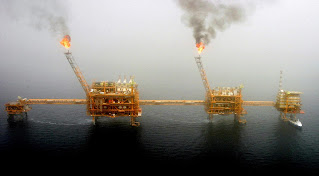



Iran is planning a rapid boost in oil output, according to a senior oil ministry official, as discussions between Tehran and six major
nations continue to eliminate US sanctions that have kept the country producing
significantly below capacity since 2018. Iran and the six nations have been in
discussions since April to resurrect a 2015 nuclear agreement that was
terminated three years ago by former US President Donald Trump, reimposing
sanctions.
Most of the country's crude output would be restored within
a month if sanctions are eased, according to Farokh Alikhani, production
manager of the National Iranian Oil Company (NIOC), who spoke to the oil ministry's SHANA website.
Oil output has been restored to pre-sanctions levels at
one-week, one-month, and three-month intervals, according to meticulous
planning."
Washington, on the other hand, stated on Tuesday that even
if the nuclear deal
However, Washington stated on Tuesday that even if the
nuclear agreement is resurrected, hundreds of US sanctions on Iran will remain
in place. This might imply that fresh Iranian oil supplies will not be
reintroduced into the crude market very soon.
In 2016, Iran emerged from years of economic isolation after
world powers withdrew punishing international sanctions against the Islamic
Republic in exchange for Tehran complying with the 2015 nuclear deal.
Tehran's oil exports surged to 2 million barrels per day
(BPD) in 2016 and peaked at 2.8 million BPD until Trump reimposed sanctions in
2018.
Iran does not publish current export data, although some energy monitoring agencies estimate them to be about 700,000 BPD in April and 600,000 in May
Comments
Post a Comment